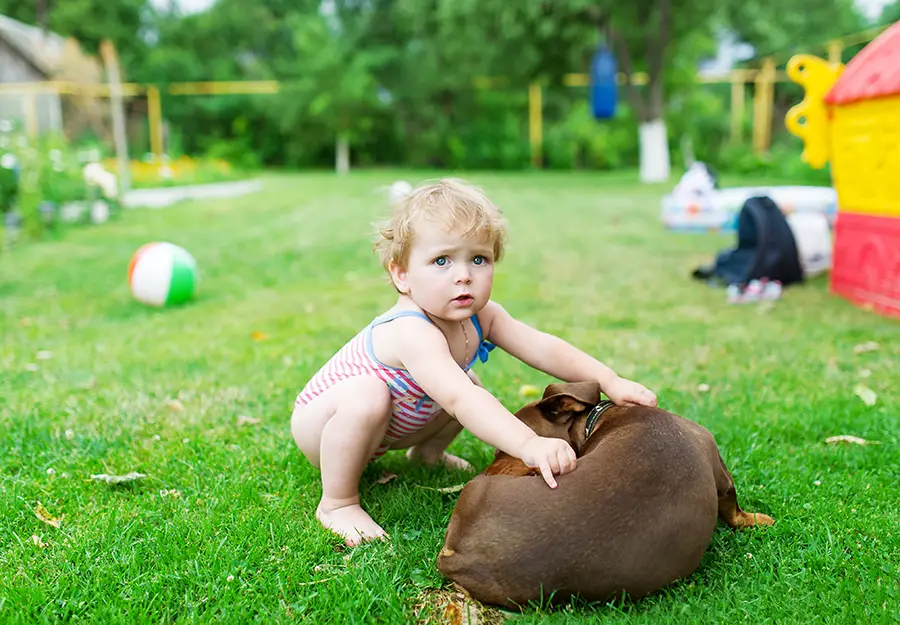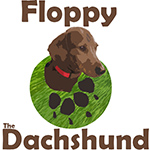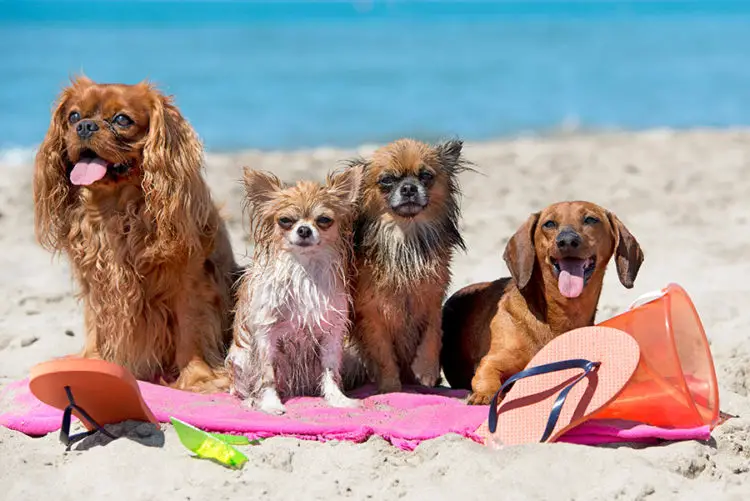When adopting a dachshund, you have many options in terms of size, coat type, color, coat pattern, etc. Two questions that people often ask breeders about our looks before adopting us are:
- Why do dachshunds look different than other dogs?
- Dachshunds have a thick coat. Do they shed a lot?
Body Structure
Dachshunds have a peculiar looking body as some would describe it. Others like to call us hot-dog shaped or wiener dogs. Our broad chest, long back, and small legs make us look different than other dog breeds.
Dachshunds were bred in Germany as badger hunting dogs. To chase after badgers with finesse, we were bred to burrow and dig.

- We have small yet sturdy, front and hind legs that make digging the ground an easy task.
- We have narrow bodies that can fit into small burrows to follow badgers and rabbits.
- Our broad chest enables our lungs to expand wider so that we breathe better. Our considerably small bodies receive a more significant amount of oxygen than many other dog breeds. Hence, we have greater stamina and energy. Chasing after badgers and foxes and wild boars is not an easy task; however, we do it with proficiency.
- We are even able to inform our masters about our location, thanks to our excellent lung capacity and loud bark.
- We are called the scent hounds because of the sharpness of our nose. When taken for hunting, we can smell badgers and find their hiding place.
Altogether, our bodies are structured in a way that enables us to pursue badgers skillfully. Plus, as an added advantage, we are exceptionally cuddly dogs!

Dachshunds Temperament And Body Language
Dachshunds have been described as ‘a half-dog high and a dog-and-a-half long’. However, despite our short legs and small bodies, we are incredibly courageous and bold. A dachshund is forever ready to take on a much bigger dog, whether it might seem logical to you or not. We are fearless and aggressive. We can easily be spotted as the dogs that hold their heads high and their backs straight.
While all dachshunds might look the same to you, slight differences in body shape could significantly impact our potential. When adopting a dachshund, you need to scan the room for that well-bred dachshund that looks majestic.
A dachshund’s skin must look extremely flexible, but it shouldn’t be wrinkly. The broad shoulders should connect our neck to the back with utmost grace. Our trunk must be taut and straight, along with a strong rear and pelvic region. Our tails are straight and long, with a slight curve. The feet also stand together and straight. The hind feet are smaller than the front ones, and the paws are thick and firm on the underside.
We have medium-sized, almond-shaped eyes. From a blue color in the double dapple dachshund to black in a brindle, our eye colors vary. While we usually have black nails, it is not uncommon to find a dachshund with liver-colored or brown fingernails.
Standard and Miniature Dachshunds
There are two available sizes in dachshunds, standard and miniature. Breeders claim that the size of a dachshund does have a lot to do with their personality.
There are two official dog sizes, the standard dachshund and the miniature dachshund. Another not-so official dog size is a tweener or medium-sized dachshund. While dachshunds are small in size, they are very aggressive. According to a study, at least one in five dachshunds has bitten a person.
The weight of standard-sized dachshunds is between 16 to 32 pounds. Usually, their height is not taller than 9 inches. Miniature dachshunds weight 8 to 11 pounds and are not more than 7 inches tall. The energy of a miniature dachshund beats that of a standard by quite a large margin. The miniature dachshund is often more aggressive as well. More patience and maturity is required to train a miniature dachshund.
There is a third official dog size only available in some countries like Germany; it is called Kaninchenteckel. The only difference between these dachshunds and miniature dachshunds is the broadness of the chest.
Dachshund Coat
Dachshunds are available in three coat types, i.e., smooth, long-haired, and wire-haired. They come in multiple colors and patterns, and you can choose the one that appeals to you the most. Some breeders say that a wire-haired dachshund is more outgoing and bold, whereas long-haired dachshunds are comparatively docile. However, research has never been released to prove this.

Thickness and Shedding
A silky and thick coat can look exceptionally pleasing on a dachshund. It needs to be cleaned and brushed regularly to keep it from matting. Dog owners often worry excessively over their dachshund’s coat. The question, ‘how much shedding is regular?’ looms as they brush our coat. Moreover, if an owner sleeps with their dog, then shedding can seem like a big problem.
The good news is that shedding is not a big problem when adopting a dachshund. How much we shed depends on various factors like our grooming, health problems, diet, shampoo, and the season of the year. However, on average, we shed less than many breeds of dog. Smooth or short-haired and wire-haired dachshunds shed so little that dog owners often don’t even notice it. Long-haired dachshunds shed comparatively more as they have a dense undercoat.
A wire-haired dachshund sheds dead hair around two to three times a year. You need to pluck out the dead hair to get rid of it. If it’s too much of a task for you, you can send your dog to professional groomers and get it done. They also need regular trimming of their eyebrows and beard.
You might have heard dachshund owners complain that their dog sheds a lot. We are not excessive shredders in general; shedding too much could be a reaction to some other problem.
- Inefficient grooming: If we do not receive a regular brushing, we are likely to shed more than we should. Remember, we need to be bathed once every six to eight weeks. If we are washed often, then it can remove sebum from our skin, leading to slower hair growth.
- Season change: If your dog sleeps outdoors or in an open area, then there’s a possibility that he is shedding more because spring is coming, and he needs less hair to keep fresh.
- Medical condition: Underlying illness or viral infection could be the reason behind the shedding. As soon as your dog gets better, the shedding will go back to its average level.
Conclusion
Brushing our coat regularly and using a mild shampoo can keep us from shedding too much. It can also make our coats smoother. For the time being, if your dog sheds more than he should, take him to a vet and keep your stubborn dachshund away from your bed and furniture as much as possible. It will relieve you of some of your stress and annoyance at a house filled with doggy hair.
See Also My Other Related Posts:
Don't Forget To Make Your Dachshund Happy And Check Out Dachshund Favorite Products!
In my article, I reveal all the information about Dachshund’s Favorite Food. The best dachshund food available on the market: Most Nutritious And Delicious Dachshund Food Products Available On The Market.
If you want to learn what are the latest trends in Dachshund fashion check my article: Dachshund’s Fashion. How to choose the dachshund clothes that just simply fit: Finding the Right Clothes for Your Dachshund.
If you want to prepare your beloved Dachshund for cold weather check out my article: Jackets And Outdoor Gears For Dachshund.
To go out with your dachshund, but not choke him to death check out my article about harnesses: Finding The Best Harness for Dachshund When you are ready to get one check the options available on the market Choosing The Right Harness For Your Dachshund.

